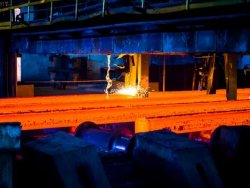The transformation of the European steel industry towards low-co₂ production represents one of the most challenging turning points in the industrial transition on the continent. During one of the conferences held within the framework of Ecomondo 2025, experts, analysts and industry representatives reviewed the progress towards decarbonization of the steel sector, discussing its problems, goals and economic consequences. Producing environmentally friendly steel means not only reducing the environmental impact, but also fundamentally rethinking the entire structure of production, from technology and energy supply to financial and market models.
Global Decarbonization Map
The discussion showed that the race for climate neutrality has now become a global process. More than 80 percent of global steel production comes from countries that have already set zero-emission targets, with Europe and East Asia playing a leading role. The European Union is aiming for carbon neutrality by 2050, while the United States, Japan and South Korea have set similar goals. China and India, which together account for more than half of global steel production, are expanding their carbon markets and introducing policies to define the so-called green steel classification.
Only Russia and Iran currently remain outside this common decarbonization path.
Technologies, energy and raw materials are the three most important pillars
The environmental transition of the steel industry requires a deep technological revision. Fully carbon-free solutions have not yet reached industrial maturity, and production costs remain significantly higher than those of traditional processes.
The replacement of blast furnaces with electric arc furnaces will also lead to a sharp increase in demand for electricity, energy that must be renewable and cost-competitive. At the same time, the development of a green hydrogen supply chain designed to replace natural gas in thermal processes is important, although it is far from full-scale implementation.
As for raw materials, the availability of high-quality iron ore and high-quality scrap remains limited. It may






